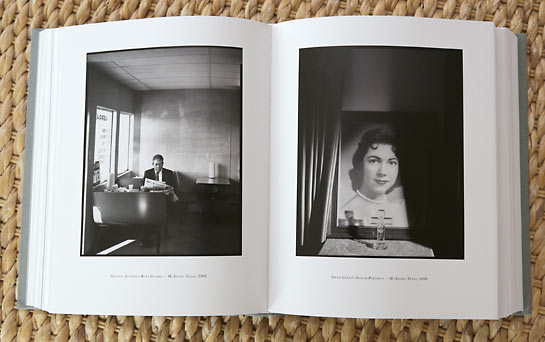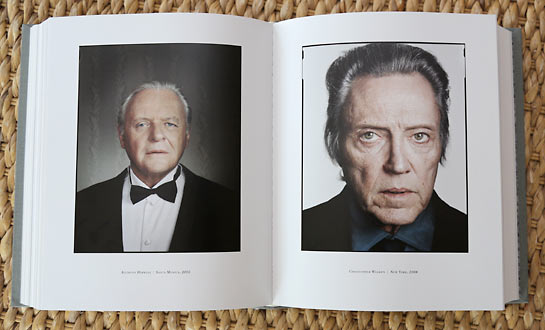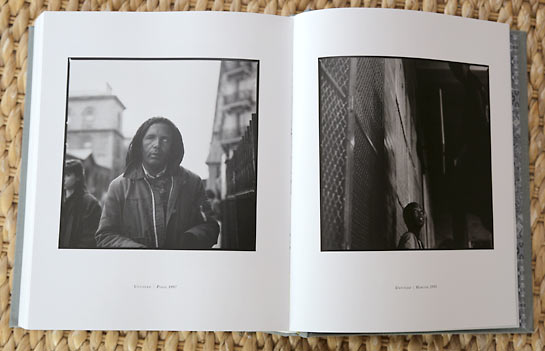 Dan Winters has a handwritten sign in his darkroom reading, “The print will speak of the love that has been infused within it.”
Dan Winters has a handwritten sign in his darkroom reading, “The print will speak of the love that has been infused within it.”
And that’s a pretty good description of his mammoth new photography book Road to Seeing.
It’s infused with love. Of photography. Of life. Of human beings. Of art. Of mystery.
Winters has gifted us with an unconventional book that is half autobiography, half photography lesson, half art history textbook, half philosophical treatise, and entirely delightful. (Yes, I know that’s four halves, but at nearly 700 pages, this feels like two books).
Roughly half of those pages contain photos, and roughly half of those were taken by Winters. The rest are favorites of his, from Daguerre’s first historic photograph of Paris, to the chilling Vietnam war photos of Eddie Adams and photos from other past masters who influenced Winters in his career.
If you’d like to know what kind of life path, and what kind of thoughts, lead a man to become a great photographer, this is the book for you.
Far more philosophical than most photography books (or most books of any kind for that matter), Road to Seeing is filled with personal observations like:
“I now find peace in the realization that millions of potential masterpieces happen each moment the world over and go unphotographed.”
Of his family photographs: “Evidence of a life replete with love is, in my mind, the greatest gift a photographer can give to the world.”
Of portrait subject Sandra Bullock: “The privilege of being in her company has made me a better man.”
Of his long-time assistants and colleagues, “I mention these associations because I believe it speaks to the practice of treating everyone in life with dignity and respect.”
We’re well beyond Photography 101 here.
And what a welcome change of pace from the self-absorbed “celebrity” photographers whose egos seem to eclipse even those of the celebrities they photograph. Winters seems to have grown more humble with his success.
And yet, he is one of those celebrity photographers. Among other things. He’s also a street photographer, a carpenter, a video director, a skilled illustrator. The man’s talents seem to know no bounds.
I was captivated by the book from the opening pages where Winters describes his life-changing childhood encounter with the movie Star Wars, and how it led him to become a maker of spaceship models so complex and detailed that he was hired, still in his teens, to build models for movies.
(This reminded me of my own experience as a 13-year-old sci-fi geek in southern California, when my class got a special field trip to see a pre-release screening of some unknown movie called Star Wars. No one knew at the time that it would become a success, and I recall sitting in the vast screening theater in Los Angeles with a bunch of chattering, spitball-throwing teenagers, wondering, “Am I the only one who sees how great this is?” Turns out I was not the only one.)
Winters hopped rapidly from one artistic genre to another, soon settling into shooting editorial photos for newspapers and magazines.
When he describes these photojournalistic assignments, Winters’ spare prose pulls the reader into the world of the stories that he covered, from tragedies like the crash of Swissair Flight 111 and the deaths of 19 Texas firefighters, to a remarkable cold-case murder in which the acknowledged and confessed rapist/killer (a priest!) is still living peacefully in a suburb of Phoenix because a DA simply won’t prosecute him.
Winters’ photographic style, and his work, is all over the map, from stark black-and-white photos reminiscent of Dorothea Lange’s depression-era portraits, to the glossiest of Hollywood magazine cover photos.
The celebrity-photo section in the center of the book will undoubtedly appeal to many readers interested in learning how Winters created the famous photos we’ve seen on magazine racks. His descriptions are often less technical than those of Greg Heisler, and more descriptive of the way he directs his subject (at least when they will allow themselves to be directed). I found it fascinating to read about the “method acting” approach that Anthony Hopkins and Christopher Walken take when they step in front of his camera and take over directing, and even more fascinating to learn that Winters’ favorite portrait subject ever was Mr. Rogers.
But despite all the acclaim (and undoubtedly money) that came from his celebrity portraiture, Winters expresses a healthy skepticism about Hollywood, celebrity, and fame.
In fact, he intentionally fled Hollywood for Austin Texas, saying: “If I were to view my behavior during my 10-year period in Hollywood, it’s clear to me that I was living more unconsciously that I would have preferred. My work ruled my life, and the decisions I made were usually steeped in the frenzy that was my career.”
Winters attributes to his father, a welder and “gentleman farmer,” his early acquaintance with hard work and the satisfactions of manual labor. Winters seems willing and even eager to undertake any amount of work to capture the image that’s in his head, even when it means staying up all night and building a set with his own hands, as he did for his portraits of Denzel Washington, Helen Mirren, and others.
If this book has a flaw, for me, it is the physical format of the hardcover. Simultaneously luxurious and cumbersome, it weighs a hefty six pounds, and its pages are of paper so thick that it feels almost like card stock.
The combination of thick paper and the book’s rather compact brick-like shape make it hard for me to fully open it to enjoy the photos as I would like to. I feel like I’m wrestling with the book as much as reading it.
So it may be a blessing in disguise that the Hardcover is frequently “Temporarily Out of Stock” at Amazon, leaving the Kindle version, weighing six pounds less and perfectly flat, as your alternative.
I encourage you to buy the Kindle version now, and if you love it enough to also want the physical brick for your shelf, you can always put that on your Christmas list if it comes back in stock.
See the Hardcover at Amazon.com
See the Kindle Edition at Amazon.com
The last word should go to Winters, and I think this may be the best advice one could give to any photographer trying to make art:
“I make it a habit to approach every picture as though it were my last.”
————————————————————-
Time is Running Out — Save $50 off my new Event Photography Course
————————————————————-
Don’t forget that my new course, Secrets of Successful Event Photography, is on sale right now. Get it here and save $50 — before the price goes up. (You can also read customer reviews of it here.)






